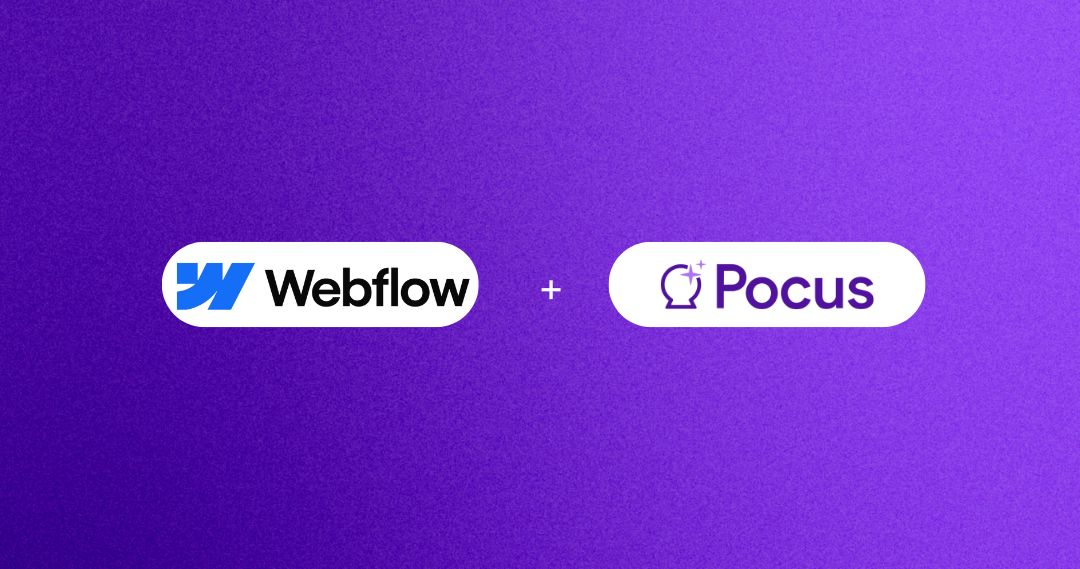Unlocking Revenue
Get the latest go-to-market insights delivered straight to your inbox.

Announcing Pocus' next chapter. The last decade was about signal aggregation. The next decade will be about intelligent guidance.
AI-powered daily task feed that tells sales reps exactly what to do next
Person-level website visitor identification now available out-of-the-box in Pocus via RB2B
45% of quarterly pipeline driven by Pocus-powered playbooks, 33% close rate on new pipeline (significantly above industry average), and millions in pipeline
We've partnered with Bombora to bring keyword intent signals directly into your existing Pocus workflows.
Turn scattered call recordings, emails, and CRM notes into actionable account insights. Unify every touchpoint from internal and external data in one place.
Instead of mysterious "73" scores that leave everyone guessing, reps get clear explainable AI scores that pass their sense checks.
Sam chats about the foundation of social selling and the fine balance between scale and authenticity
Meka (First Round) shares how the role of the seller has changed and the evolution of sales tech in today's market
Build prospect lists that combine your CRM data with net-new accounts and contacts. Unified prospecting intelligence.
Introducing SmartMaps, the easiest way to empower your reps to strategically engage their accounts. No more manual work and definitely no more spamming accounts.
Smart Sequence Integration automatically pushes AI-generated personalized messages directly into your favorite sales engagement platform. We’re rethinking how sequences should work in 2025.
Kevin shares the traits that make a 10x product marketer and how to integrate AI into your product marketing efforts
Deep dive into Pocus’ secret sauce - our Relevance Agent™ and the results we’ve been able to drive for customers with this game-changing AI.
Mark shares defining qualities of a 10x seller and how to hire, train, and coach top performers
Kieran Flanagan shares why the time is now to invest in AI across GTM functions
Tessa Whittaker shares her journey from Executive Assistant to success as a modern RevOps leader
How Pocus helped LaunchDarkly unify buying signals and drive 3.8x more closed won and 2.8x more pipeline with AI prospecting
Kyle Poyar’s Advice on Growing Your Newsletter and Business
The sales tech landscape has never been more confusing, here's how AI has shifted categories and what that means for buyers.
We're sharing proven GTM strategies from some of the smartest leaders in the industry.
How GTM professionals from Canva, Monday.com, Sourcegraph, and more are using Pocus AI Strategy to hit their revenue goals
Unlock AI-driven sales insights for faster, smarter selling.
The second part of our series exploring where AI is a valuable GTM tool, including ready-to-use prompts.
The knowledge you need to win the next era of GTM with data and AI.
Learn about how Monday.com uses Pocus to uncover expansion opportunities and build customer loyalty.
Learn about how Webflow uses AI-powered playbooks to move upmarket with more deal intelligence.
The first in a two-part series exploring where AI is a valuable GTM tool versus a toy.
Learn about how Canva uses AI-powered playbooks to identify expansion opportunities.
Go from a prioritized account to a fully realized strategy with a few clicks.
Alex shares the strategies and tactics that he used to build GTM motions from scratch, twice.








GTM insights delivered.
Get best practices, frameworks, and advice from top GTM leaders in your inbox every week.
.png)
.png)

.jpg)

.png)
.png)


.png)
.png)
.png)

.png)



.jpg)
.avif)




.avif)

.jpg)




.avif)